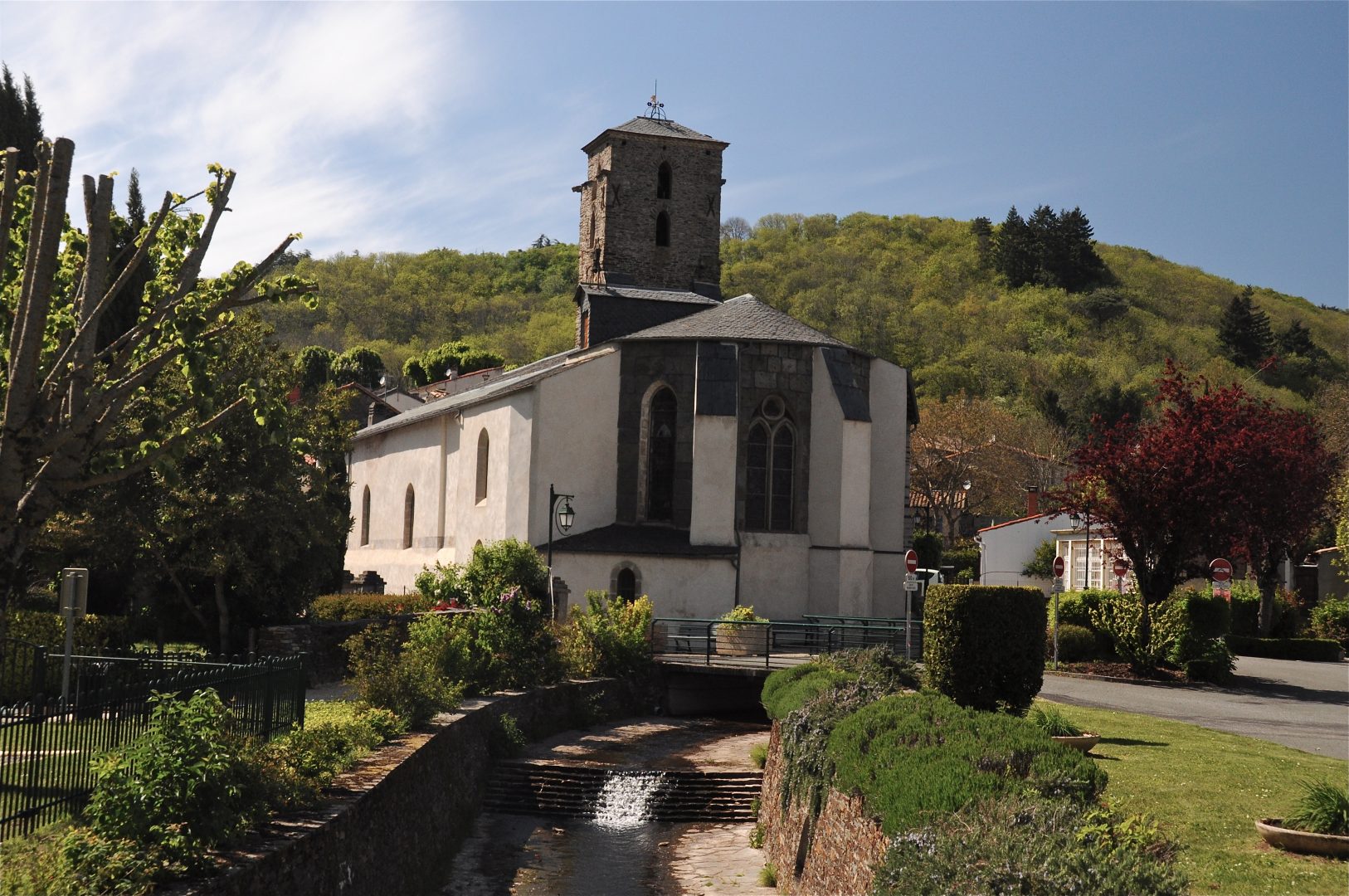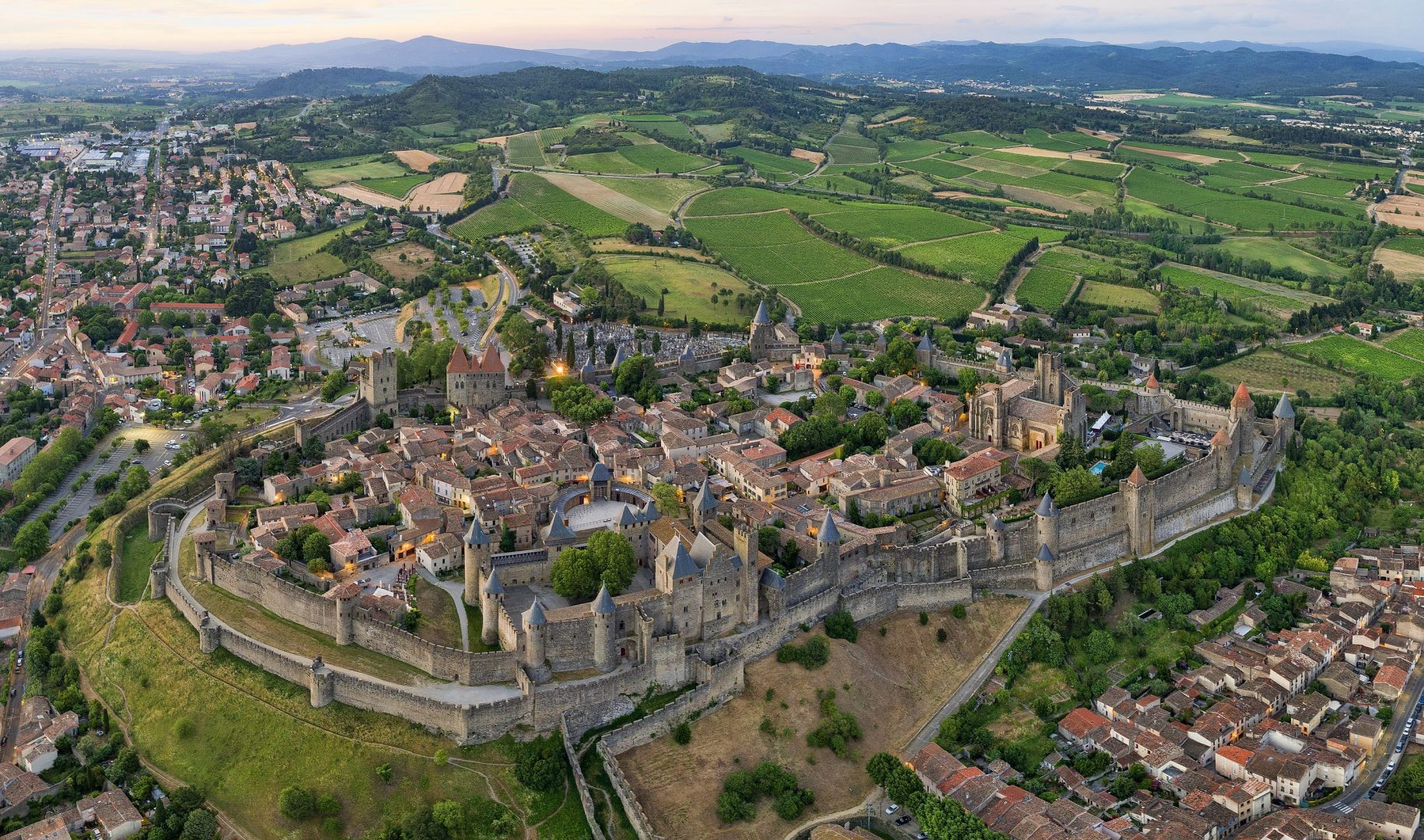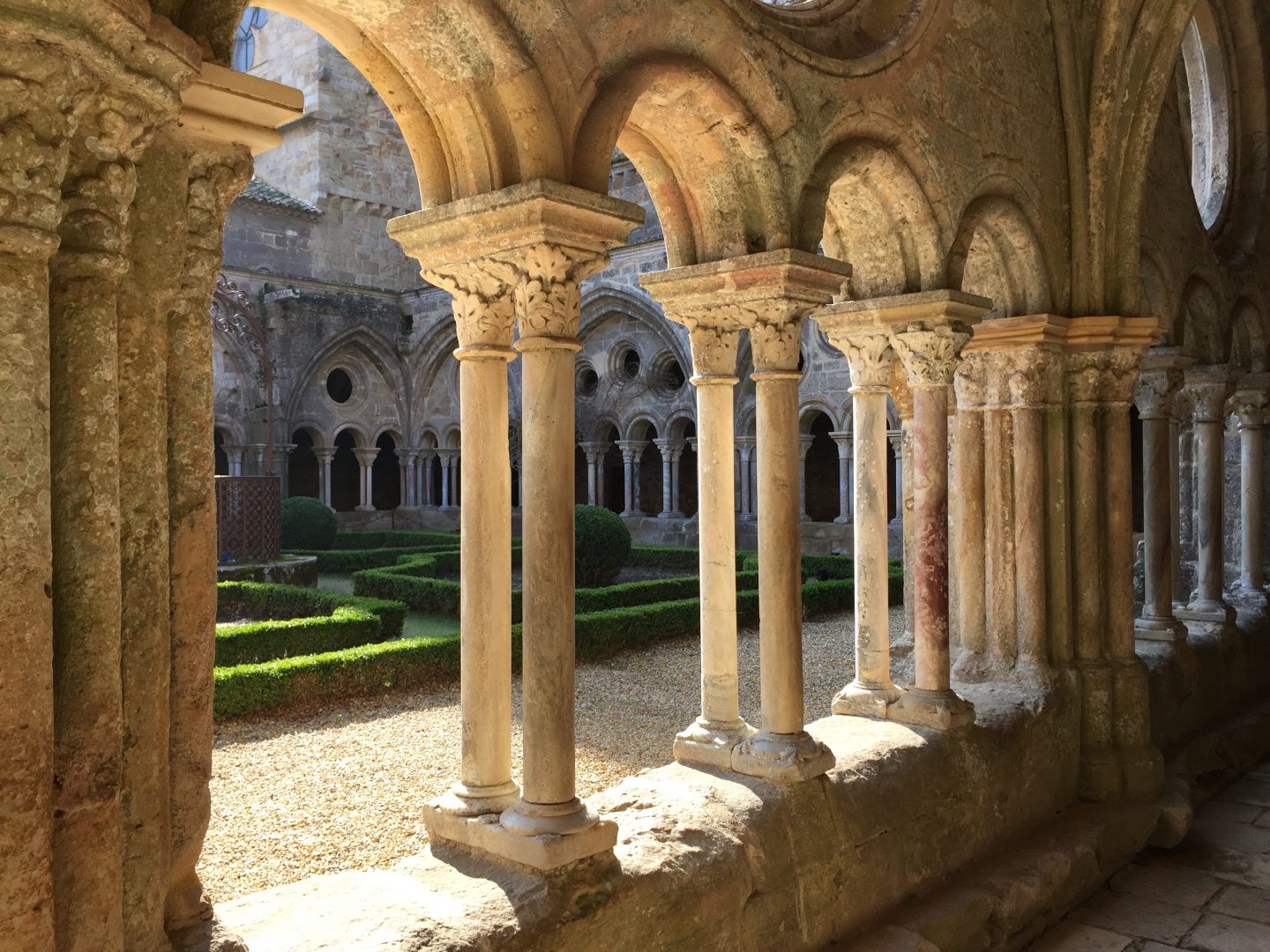Cuxac-Cabardès is peaceful mountain village, located in the heart of Pays Cathare.
This peaceful mountain village, located in the heart of Pays Cathare, has been organized since the 9th century around the Sainte-Cécile church on Dure Street, which is today a historic monument and from which remains a unique tower. During the Middle Ages, Cuxac-Cabardès had an important fortress and the village suffered many battles during the Cathar wars because of its central location between Carcassonne, Albi, Lastours and Saissac.
1. Église Sainte-Cécile de Cuxac-Cabardès

The Sainte-Cécile church is a church located in France in the town of Cuxac-Cabardès, in the Aude department in the Occitanie region. The church has a fortified bell tower built to the northwest. It is a square tower spanning an alley, supported by buttresses and flanked in a corner by a small watchtower. The watchtower is supported by a series of overlapping circular cantilevers.
2. Cité de Carcassonne

The Cité de Carcassonne is a medieval citadel located in the French city of Carcassonne, in the department of Aude, Occitanie region. It is located on a hill on the right bank of the River Aude, in the south-east part of the city proper.
3. Château de Quéribus

The Château de Quéribus is a ruined castle in the commune of Cucugnan in the Aude département of France. It has been listed as a monument historique by the French Ministry of Culture since 1907. Queribus is one of the “Five Sons of Carcassonne”, along with Aguilar, Peyrepertuse, Termes, and Puilaurens: five castles strategically placed to defend the French border against the Spanish until the border was moved in 1659. It is sometimes regarded as the last Cathar stronghold. After the fall of Montségur in 1244 surviving Cathars gathered together in another mountain-top stronghold on the border of Aragon.
4. Abbaye de Fontfroide

Fontfroide Abbey is a former Cistercian monastery in France, situated 15 kilometers south-west of Narbonne near to the Spanish border. It was founded in 1093 by Aimery I, Viscount of Narbonne, but remained poor and obscure, and needed to be refounded by Ermengarde, Viscountess of Narbonne. In 1144 it affiliated itself to the Cistercian reform movement. Shortly afterward the Count of Barcelona gave it the land in Spain that was to form the great Catalan monastery of Poblet, of which Fontfroide counts as the motherhouse, and in 1157 the Viscountess Ermengard of Narbonne granted it a great quantity of land locally, thus securing its wealth and status.
5. Basilica of Saints Nazarius and Celsus

The Basilica of Saints Nazarius and Celsus is a Roman Catholic minor basilica located in the citadel of Carcassonne, France. It is a national monument and is in the Gothic-Romanesque architectural tradition.
